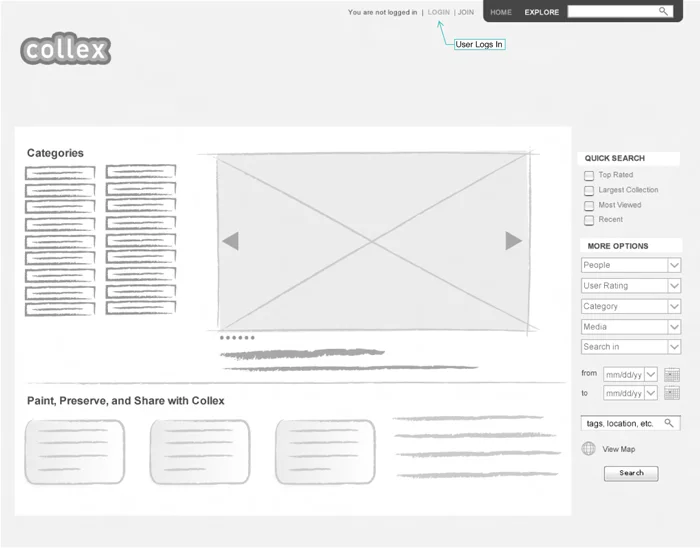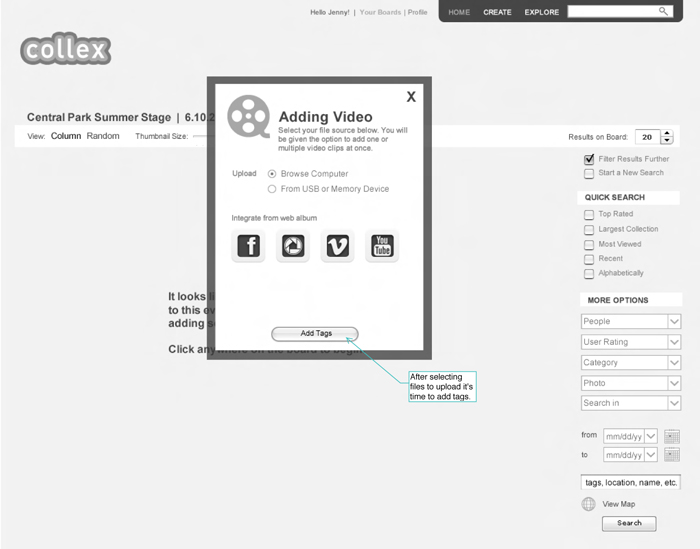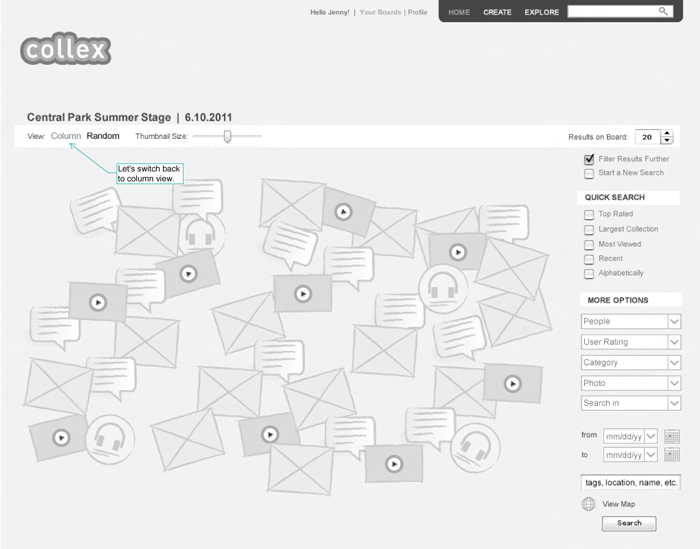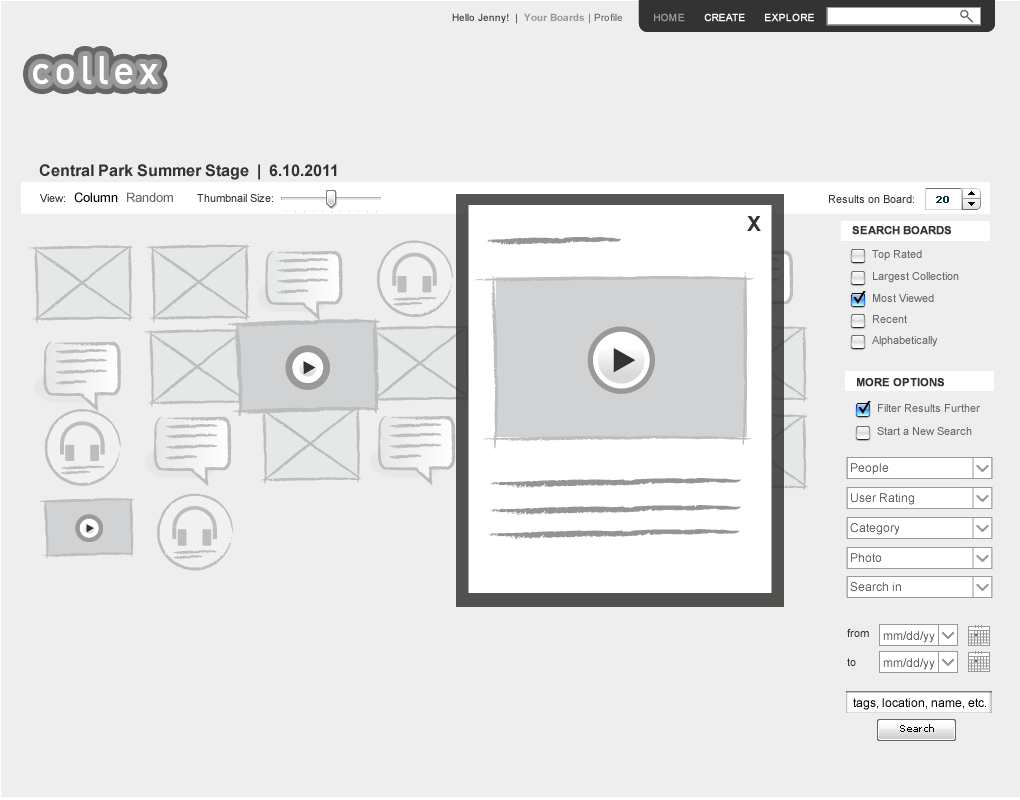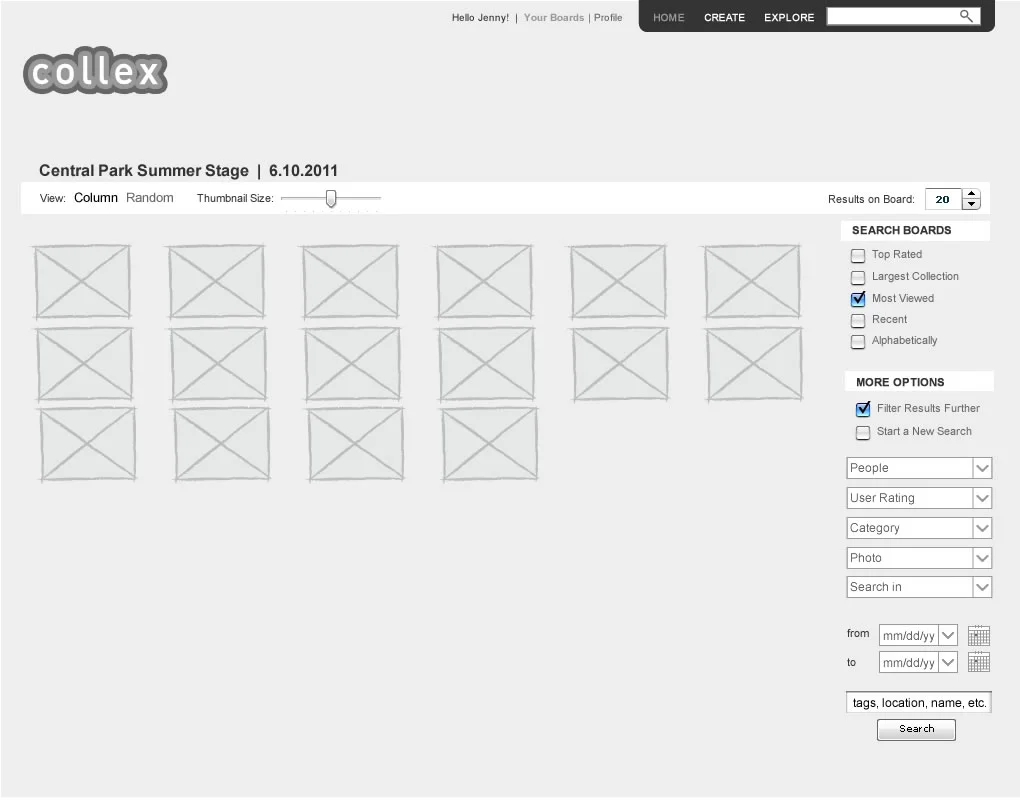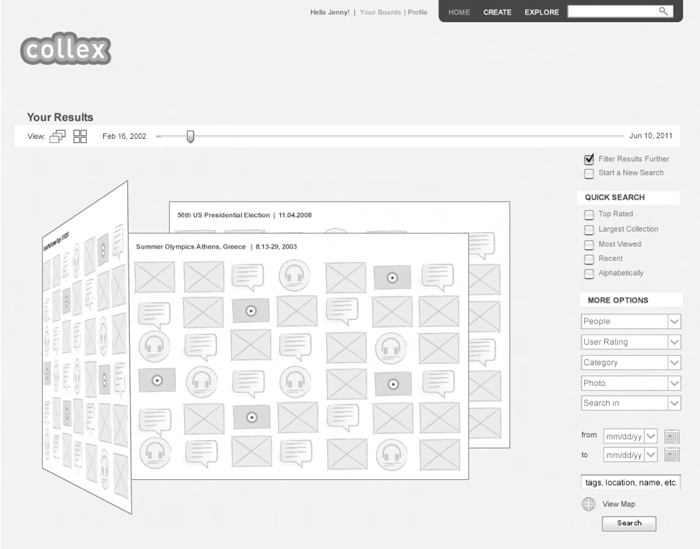Collex
Integrate, Share, and Relive Memories
Problem
Discussing past events with friends or family often reveal contrasting impressions of the same experience. The thoughts, emotions, and understanding of and from an event may vary significantly for each individual. A cross fertilization of impressions can lead to deeper knowledge and appreciation around an experience. By creating a collective memory, constructed from multiple perspectives, we can paint, preserve and share a more vivid, integrated and representational picture of a common experience.
Audience
The target audience is made up of people who like to capture special moments in life as it is happening. This group also enjoys sharing their experiences with others and appreciates revisiting these memories after the actual event has occurred. These individuals are familiar with the use of electronic devices, such as computers, digital cameras and mobile devices. While the primary target audience is comprised of individuals who want to share and expand their first-hand experiences, there is a secondary audience of those who did not directly experience the event but have a curiosity or interest in it.
Solution
Collex is a virtual memory board that allows the online community to collectively share their experience of specific events in the form of personal video, photographs, sound bytes, comments, and links all from any digital device.
Discovery
For the "Practice of Interaction Design" course, we were tasked to design a device that addresses a basic human need or desire around time management. In the discovery phase we explored ideas both individually and within a team setting. Once we narrowed down our focus to capturing memories, we began researching the domain, speaking with people as to how they currently relive their memories and what tools they use, and examined existing solutions, while documenting our observations along the way. We selected our target audience, and identified the opportunity based on key user needs and desires. Next, we began sketching a scenario and mapping out the user tasks and flows, in order to see what works and what doesn’t. From here it was time to explore concepts through rough sketches.
Research and Sketching
Scenarios
User Flow
Concept Exploration
During the concept exploration phase, we continued to develop sketches, create paper prototypes, while exploring several directions. After selecting a direction it was time to create a process flow diagram that described the desired experience.
Process flow diagram




